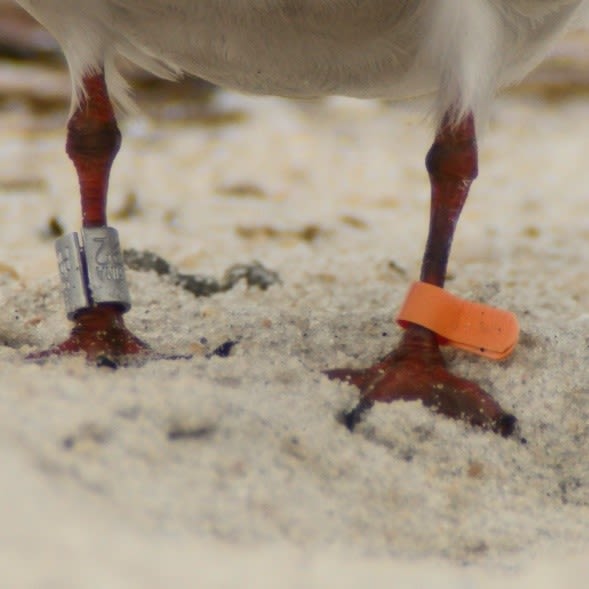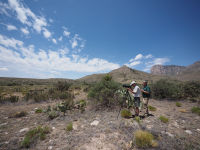Clay Taylor took the 115-mm objective module to the Texas Gulf Coast for an early morning birding session. Check out his adventure to SEE THE UNSEEN.

At the water’s edge, flocks of Sanderlings (Calidris alba) run before the waves, while others roost in the sand, usually near an old tire track to get out of the wind. Look amongst the Sanderlings for a Piping Plover (Charadrius melodus) or Snowy Plover (Charadrius nivosus) – both Endangered Species shorebirds that spend their time on sandy beaches and flats, not mudflats like most shorebirds.
If you are lucky, you can find a plover or a tern that has been banded with a leg-flag or color bands that can be used to determine where the bird was banded, how old it is, and whether it returns to the same stretch of beach each year (many do).


This Piping Plover
is unbanded.
The ATX 115 with either a phone or a DSLR (Digital Single-Lens Reflex camera) attached to it can help read the band numbers.

The Laughing Gulls come in close, as they used to being fed by beachgoers, so I toss them some popcorn that they happily gobble up. Having the Gulls standing nearby helps the other birds to view me as less of a threat. I use the ATX 115 to scan the waves offshore, looking for Terns, Gulls and the less-common waterbirds like Loons, Grebes, Shearwaters, or Sulids. On this day, the waters offshore are pretty quiet.

A loud whistle announces the arrival of an American Oystercatcher (Haematopus palliatus), and I lower the tripod so that I am sitting down on the sand, shooting photos through the scope. I switch over to the STX eyepiece module on the 115-mm objective module, so I can more quickly point the camera and scope to follow the bird as it walks up the beach. After a few minutes, it feeds, and I get some rather handsome photos.

Royal Tern
A great morning
I also snap a few photos of the Royal Tern (Thalasseus maximus) flying by.
A great morning!”

About the author:
Clay Taylor
Clay Taylor became a birder in the mid-1970s, both watching and photographing birds in the Northeastern United States. Today, 45 years later, he still enjoys observing and capturing birdlife. As Senior Manager of the Naturalist Market at SWAROVSKI OPTIK North America, he brings people closer to nature.
Join him on his birding trips to Hazel Bazemore Park or Guadalupe Mountains National Park in West Texas where he was joined by Joel Simon.













